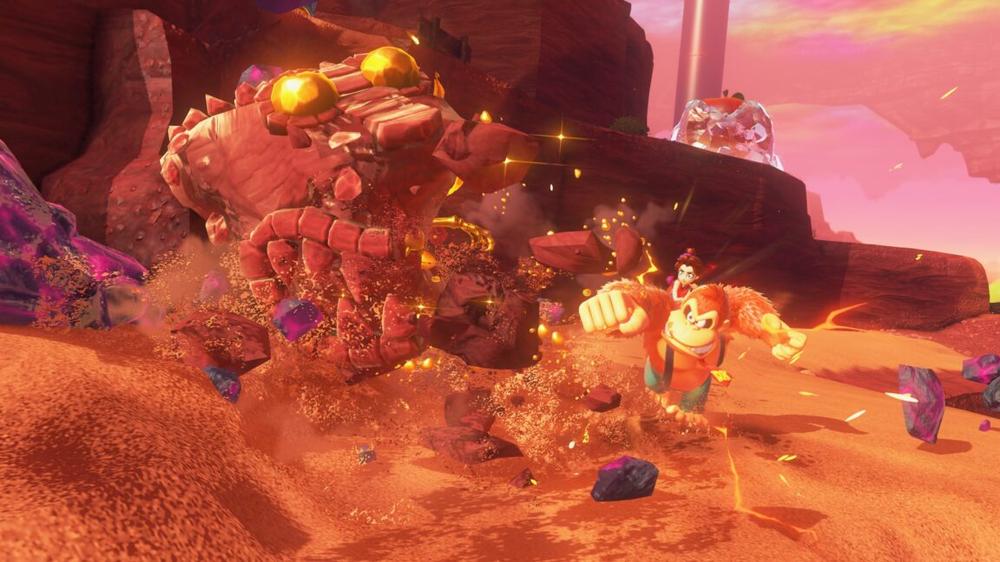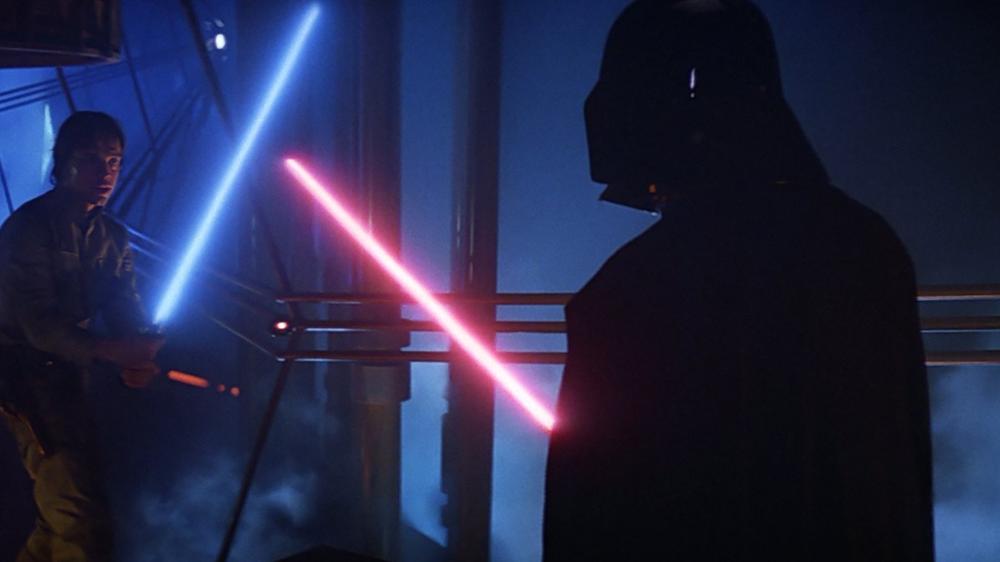When the Switch 2 was fully unveiled back in April, we weren't alone in expecting the announcement of a true follow-up to Super Mario Odyssey—one of the original Switch's best-selling games and our pick for the best game of 2017. Instead, we got our first look at Donkey Kong Bananza, the big ape's first fully 3D adventure since the Rare-developed Donkey Kong 64 back in 1999.
The fact that Nintendo wasn't willing to commit its longstanding plumber mascot to its first first-party platformer on the Switch 2 could have been seen as a sign of a rushed, second-tier spin-off effort here. After playing through Donkey Kong Bananza, though, I'm happy to report nothing could be further from the truth for this deep and worthy spiritual successor to Super Mario Odyssey (from many of the same development staff). Donkey Kong Bananza captures the same sense of joyful movement and exploration as the best Mario games, while adding in an extremely satisfying terrain destruction system that shows off the Switch 2 hardware to great effect.
Beat up the earth
Its that terrain destruction system that most sets Donkey Kong Bananza from previous 3D platformers from Nintendo and others. Fully three of the four face buttons on the Switch 2 controllers are devoted to letting Donkey Kong punch either horizontally, upward, or downward, often taking out large chunks of the nearby scenery as he does.
Punching through the terrain in this manner forms the fast, crunchy, and powerfully kinetic core of the game. It's hard to overstate how incredibly cathartic it can be to quickly reduce a well-ordered chunk of dirt and rock into a mountain of valuable, collectible golden rubble (then gathering up all the nearby rubble with a quick tap of a shoulder button). Imagine a 3D Mario game by way of Traveller's Tales Lego games and you'll have some idea of the extremely satisfying combination on offer here.
The semi-persistent changes in scenery also do a good job highlighting the Switch 2's hardware, which doesn't seem to drop a single frame even as the rubble flies and the ground's very shape morphs under Donkey Kong's persistent punching. That extra hardware power also lends itself to some nice graphical touches, from the mirror-like shine on a pile of golden rubble to the gentle movement of fur that rustles in the breeze.
I get around
Donkey Kong can also pick up chunks of terrain, using them as impromptu melee weapons or, more often, hurling them to hit destroy far off enemies or obstacles or key switches. The aiming-and-throwing controls for this terrain-throwing system are just clunky enough to be annoying—this is a far cry from Gears of Donkey Kong or something. Still, the interactions between different types of hurled terrain end up forming the root of many interesting situational puzzles—throwing some snow to harden sections of a harmful lava lake into a solid platform, for instance, or using a chunk of explosive rock to destroy an otherwise impervious spiky enemy.
When you're not tearing up the scenery to your benefit, simply getting around in Donkey Kong Bananza is simply a joy. Donkey Kong Country fans will be happy to know the classic roll is back, and can be used to help extends jumps or quickly change mid-air direction (a la Cappy from Mario Odyssey). Donkey Kong can also slide along on chunks of terrain in a zippy, madcap land-surfing mode that's wonderfully difficult to control effectively. And the ability to climb along the edge of most surfaces adds a layer to the vertical gameplay dimension that doesn't rely on precision jumping, and which is utilized well to hide some of the game's more out-of-the-way secrets.
As the game progresses, you'll also unlock a handful of animalistic "Bananza" transformations from a menagerie of gigantic animal DJs (don't ask). These temporarily grant DK new powers—a quick-dashing Zebra or a fluttering, hovering ostrich, for instance. The game builds some specific gatekeeping challenges around each transformation, of course, but the extra locomotion options become a welcome part of your locomotion toolbelt when simply exploring generic areas.
Running around and smashing up the world isn't all joy, though. Problems arise when you dig into thick patches of dirt, crafting a narrow, Kong-sized tunnel that's surrounded on all sides by opaque earth. The camera system does the best it can to deal with these tricky scenarios, making the surrounding ground opaque and highlighting only the notable features surrounding you. Still, it's easy to lose track of where your digging has taken you and how to get back to the surface, especially when the best way out of a jam is to "dig up, stupid".
Oooh, Banana!
All this terrain destruction and digging is in service of the game's primary goal: collecting a bunch of giant bananas. These are roughly as plentiful as the Power Moons scattered across Super Mario Odyssey, and roughly as varied in their availability. Some are sitting out in the open, waiting to be stumbled on. Others are hidden in some of the game's most out-of-the-way underground crevices, and practically require the use of collectible in-game treasure maps to find. Many are hidden in elaborate challenge rooms that test your precision platforming, terrain destruction, or combat skills.
Unlike the Power Moons in Mario Odyssey, though, hunting down bananas is largely optional to progress down the succession of elaborate, wide-open, high-ceilinged layers (read: "levels") on a quest toward the planet's core. Instead, bananas are primarily used to unlock upgrades on a surprisingly deep skill tree, grant DK more health, more punching power, or longer Bananza transformations. Other collectibles can be used to buy stylish and protective outfits to further increase DK's endurance
These upgrades provide ample incentive to go off the beaten path for those who like exploring, as well as dozens of hours-worth of enjoyable challenges for completionists to delve into after the credits roll. But the game's structure also allows skillful and/or impatient players to rush towards the game's conclusion quite quickly, rushing towards and through the visually inventive bosses that guard the game's major chokepoints.
Those that rush, though, may end up struggling with the game's final gauntlet of challenges, which quickly ramp up the difficulty while re-introducing some classic DK enemies (that we aren't allowed to say more about at the moment).
Wait, that kid is Pauline?
Thus far, we've avoided talking about the ridiculously convoluted complex plot the game builds around Donkey Kong's quest for bananas, and the evil corporate forces that want to stop his journey deep into the planet's core. The game's underground world is populated with all sorts of talking animals, sentient rocks, and familiar Kong faces to either assist DK or ask him for help with various ridiculous errands. They're cute, but their chatter is more or less ignorable.
The main exception to this is Pauline, the damsel-in-distress from the original Donkey Kong, recast here as a precocious child working with DK to find a way back to her home on the surface. Pauline's effort to overcome inherent stage fright and embrace the literally magical power of her singing voice was surprisingly touching. That's thanks in large part to a winning voice acting performance that forms the basis for some toe-tapping gibberish that plays behind DK's Bananza transformations.
The adorable relationship between young Pauline and the silent Donkey Kong is the icing on a very satisfying cake here. Even though Mario is nowhere to be seen, Donkey Kong Bananza seems destined to be thought of in the same breath as the Mario games that have come to define earlier Nintendo hardware launches.

 Peugeot e-3008 dual motor, partono gli ordini: 325 CV e 490 km di autonomia | Prezzi
Peugeot e-3008 dual motor, partono gli ordini: 325 CV e 490 km di autonomia | Prezzi